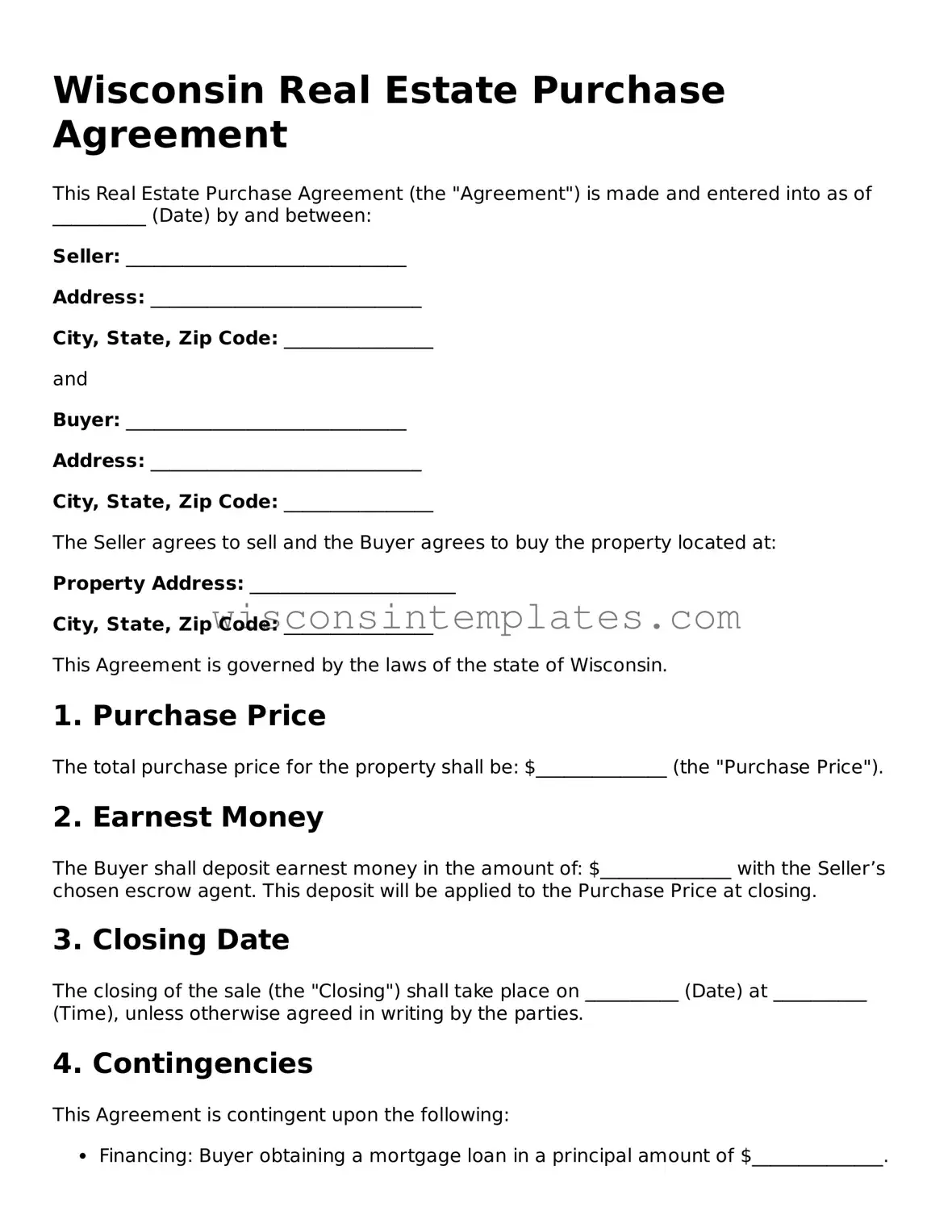Legal Real Estate Purchase Agreement Form for Wisconsin State
The Wisconsin Real Estate Purchase Agreement is a legally binding document that outlines the terms and conditions under which a buyer agrees to purchase real property from a seller. This form serves as a critical framework for the transaction, detailing essential elements such as the purchase price, property description, and closing date. Understanding its components is vital for both buyers and sellers to ensure a smooth and successful real estate transaction.
Launch Editor Now
